William Butler Yeats
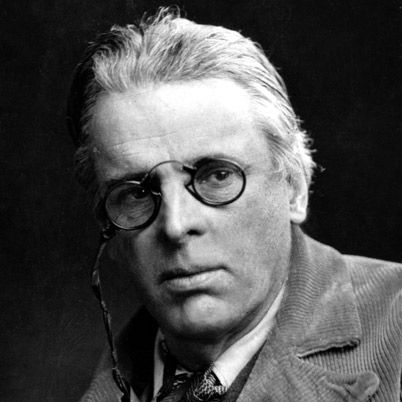
(1865-1939)

Who Was William Butler Yeats?
William Butler Yeats published his first works in the mid-1880s while a student at Dublin's Metropolitan School of Art. His early accomplishments include The Wanderings of Oisin and Other Poems (1889) and such plays as The Countess Cathleen (1892) and Deirdre (1907). In 1923, he was awarded the Nobel Prize for Literature. He went on to pen more influential works, including The Tower (1928) and Words for Music Perhaps and Other Poems (1932). Yeats, who died in 1939, is remembered as one of the leading Western poets of the 20th century.
William Butler Yeats was born on June 13, 1865, in Dublin, Ireland, the oldest child of John Butler Yeats and Susan Mary Pollexfen. Although John trained as a lawyer, he abandoned the law for art soon after his first son was born. Yeats spent much of his early years in London, where his father was studying art, but frequently returned to Ireland as well.
In the mid-1880s, Yeats pursued his own interest in art as a student at the Metropolitan School of Art in Dublin. Following the publication of his poems in the Dublin University Review in 1885, he soon abandoned art school for other pursuits.
Career Beginnings
Around this time, Yeats founded the Rhymers' Club poetry group with Ernest Rhys. He also joined the Order of the Golden Dawn, an organization that explored topics related to the occult and mysticism. While he was fascinated with otherworldly elements, Yeats's interest in Ireland, especially its folktales, fueled much of his output. The title work of The Wanderings of Oisin and Other Poems (1889) draws from the story of a mythic Irish hero.
Acclaimed Poet and Playwright
In addition to his poetry, Yeats devoted significant energy to writing plays. He teamed with Lady Gregory to develop works for the Irish stage, the two collaborating for the 1902 production of Cathleen Ni Houlihan . Around that time, Yeats helped found the Irish National Theatre Society, serving as its president and co-director, with Lady Gregory and John Millington Synge. More works soon followed, including On Baile's Strand , Deirdre and At the Hawk's Well .
Following his marriage to Georgie Hyde-Lees in 1917, Yeats began a new creative period through experiments with automatic writing. The newlyweds sat together for writing sessions they believed to be guided by forces from the spirit world, through which Yeats formulated intricate theories of human nature and history. They soon had two children, daughter Anne and son William Michael.
The celebrated writer then became a political figure in the new Irish Free State, serving as a senator for six years beginning in 1922. The following year, he received an important accolade for his writing as the recipient of the Nobel Prize in Literature. According to the official Nobel Prize website, Yeats was selected "for his always inspired poetry, which in a highly artistic form gives expression to the spirit of a whole nation."
Yeats continued to write until his death. Some of his important later works include The Wild Swans at Coole (1917), A Vision (1925), The Tower (1928) and Words for Music Perhaps and Other Poems (1932). Yeats passed away on January 28, 1939, in Roquebrune-Cap-Martin, France. The publication of Last Poems and Two Plays shortly after his death further cemented his legacy as a leading poet and playwright.
QUICK FACTS
- Name: William Butler Yeats
- Birth Year: 1865
- Birth date: June 13, 1865
- Birth City: Dublin
- Birth Country: Ireland
- Gender: Male
- Best Known For: William Butler Yeats was one of the greatest English-language poets of the 20th century and received the Nobel Prize for Literature in 1923.
- Fiction and Poetry
- Journalism and Nonfiction
- Astrological Sign: Gemini
- Metropolitan School of Art (Dublin)
- Nacionalities
- Death Year: 1939
- Death date: January 28, 1939
- Death City: Menton
- Death Country: France
We strive for accuracy and fairness.If you see something that doesn't look right, contact us !
CITATION INFORMATION
- Article Title: William Butler Yeats Biography
- Author: Biography.com Editors
- Website Name: The Biography.com website
- Url: https://www.biography.com/authors-writers/william-butler-yeats
- Access Date:
- Publisher: A&E; Television Networks
- Last Updated: August 17, 2020
- Original Published Date: April 2, 2014

William Shakespeare

How Did Shakespeare Die?

Christine de Pisan

Sor Juana Inés de la Cruz

14 Hispanic Women Who Have Made History

10 Famous Langston Hughes Poems

5 Crowning Achievements of Maya Angelou

Amanda Gorman

Langston Hughes

7 Facts About Literary Icon Langston Hughes

Maya Angelou
(92) 336 3216666
William Butler Yeats
William Butler Yeats was an Irish poet. He was a leading figure of twentieth-century literature. He is a pillar of the literary establishment in Ireland. He assisted in founding the Abbey Theatre, and also served as Senator of the Free Irish State for two terms. Behind the Irish Literary Revival, he was among the leading force along with Edward Martyn, Lady Gregory, and many others.
The poetry of Yeats is featured with Irish Legends and occult. His first collection of poems was published in 1889. The poems in this collection are slow-paced and lyrical and indebted to Percy Bysshe Shelley, Edmund Spenser, and poets of Pre-Raphaelite Brotherhood. His 20 th -century poetry was more realistic and physical. In his poetry, he renounced his transcendental beliefs and remained highly preoccupied with the spiritual and physical mask. He also talks about the cyclic theories of life in his poetry. He was awarded the Nobel Prize in Literature in 1923.
A Short Biography of William Butler Yeats
William Butler Yeats was born on 13 th June 1865 in Dublin, Ireland, to John Yeats and Susan Mary Pollexfen. He was the eldest son of the family. His father was a lawyer, and when Yeats was born, he left his profession. Yeats’ early years of life were spent in London and also made frequent visits to Ireland. His father studied arts in London.
In 1880, Yeats, while attending the Metropolitan School of Art in Dublin, pursued his own interest in arts. In 1885, he published his poems in the Dublin University Review. Soon after publishing, Yeats abandoned the art school.
Beginning of Literary Career
In the second half of the 1880s, Yeats encountered Lionel Johnson, George Bernard Shaw, and Oscar Wilde. He also met Maud Gonne, a staunch supporter of Irish independence. Maud Gonne was a revolutionary woman and became a muse for Yeats for many years. Yeats proposed to her for marriage several times, but de declined. In 1892, Yeats published a drama Countess Cathleen, which was dedicated to her.
It was during this time that Yeats established the poetry group Rhymer’s Club with Ernest Rhys. He also joined the organization Order of the Golden Dawn. The organization discusses topics related to mysticism and occult. Yeats was much fascinated with the fantastical elements. His interests in the folktales of Ireland were the sources of his poetry. The title of his collection The Wanderings of Oisin and Other Poems published in 1889 was drawn from the account of a mythic Irish hero.
Celebrated Poet and Playwright
Besides poetry, Yeats also wrote plays. He became associated with Lady Gregory and to write works for the Irish theatre. In 1902, Yeats and Lady Gregory collaborated for the production of Cathleen Ni Houlihan . Yeats, during this time, also assisted in founding the National Theatre Society of Ireland. He also served as the president and co-editor along with John Millington Synge and Lady Gregory. Soon more plays were produced, and among them, the most celebrated was Deirdre, At the Hawk’s Well, and On Baile’s Strand.
In 1917, he married George Hyde-Lees. Following the marriage, Yeats entered into a new period of creativity by means of experiments with automatic writing. Yeats and his newly wedded wife would sit together for writing. They both believed that the forces from the spirit world would guide them. From his belief in the spiritual world, Yeats had formulated his intricate theories of human history and nature. The couple had two children: William Michael (son) and Anne (daughter).
Due to his services for establishing Irish Literature, Yeats soon became a political figure in the new Free State of Ireland. In 1922, he became a senator and served for six years. In 1923, he received the Nobel Prize in Literature. The official website of Nobel Prize asserts that Yeats was given the prize “for his always inspired poetry, which is a highly artistic form that gives expression to the spirit of a whole nation.”
Yeats wrote poetry and other works till his late days. Important works of his late years include A Vision, The Wild Swans at Coole, The Tower, and Words for Music Perhaps and Other Poems. On 28 th January 1939, Yeats died in Roquebrune-Cap-Martin, France. Shortly after his death, his collection Last Poems and Two Plays was published.
The Writing Style of William Butler Yeats
Yeats is regarded as one of the key poets of the twentieth century in the English language. He is known as a Symbolist poet. He used suggestive imagery and symbolic structures throughout his literary works. He decides on words and arranges them in a unique style that they also suggest the significant and resonating abstract ideas , in addition to a surface meaning. His writing style is mainly based on the use of symbols, which is mostly physical, that gives two meanings: literal and suggestive. Moreover, his symbols have immaterial and timeless qualities. They are applicable and comprehensible in every period.
Yeats has mastered a traditional verse form in his poetry. He does not practice free verse like other modernists. However, Yeats’s writing has been influenced by modernism. The modernism features can be seen in his rejection of more conventional poetic diction that he used in his early work. In his later works, the language is more serious; he directly approaches themes that significantly characterize his plays and poetry of his middle period. The works of the middle period are Responsibilities, The Green Helmet, and In the Seven Wood.
Yeats wrote his later poetry and played in a more personal style. These works were written in the last twenty years of his life. Yeats also refers to his daughter and son in these works. Moreover, these works are full of meditations of growing old. In the poem “The Circus Animals,” Yeats describes the motivation for his late works as:
“Now that my ladder’s gone
I must lie down where all the ladders start
In the foul rag and bone shop of the heart.”
The early poetry of Yeats is heavily based on the myths and folklore of the Irish language. His later works focus more on contemporary issues. The shift of subject from folklore to contemporary issues marks a dramatic transformation in Yeats’s style. His works, and so as his style, can be divided into three periods. The poems written in the early phase are purely Pre-Raphaelite in tone, intentionally elaborated, and silted (according to the unsympathetic critics). At that time, Yeats wrote epic poems, The Wanderings of Oisin and The Isle of Statues. Other poems that he wrote in his early phase are lyrical and based on the subject of the esoteric and mystical subject and themes of love.
In the middle period, Yeats abandoned the writing style of Pre-Raphaelites that was the staunch feature of his early work. In the middle period, he adopted the Landor-style of social ironism. The critics who admire the middle period works of Yeats may feature it as having flexible yet powerful rhythm and also severely modernist, whereas those critics who do not admire his middle period works find his poems as barren with weak imagination.
The latter works of Yeats were based on the mystical system and extract its inspiration from it. Under the influence of spiritualism, Yeats began to work out a mystical system for himself. The poetry of this period, in many ways, marks Yeats’s return to the vision of his earlier works. He reproduced the theme of The Wandering Oisin in his late work, A Dialogue Between Self and Soul . Both poems deal with the subject of opposition between the spiritually-minded man of God and the worldly-minded man of the sword.
Critics also claim that the way Pablo Picasso covered his transition between the paintings Yeats also covered his transition from the poetry of the nineteenth-century to the twentieth century. However, some inquire whether the late poetry of Yeats has much in common with his contemporary modernists T. S. Eliot or the earlier.
The well-known poem of W. B. Yeats, “The Second Coming,” is read by the modernist readers as a dirge for the decay of European civilization. The poem also explains the apocalyptical mystical theories of Yeats. The most important collections of Yeats poetry began with the publication of The Green Helmet in 1910, which was followed by Responsibilities in 1914. With the passing age, Yeats was getting more spare and powerful with the use of imagery. His poetry collection The Tower, The Winding Stair, and New Poems contain his most powerful imagery that features the modernist era of the twentieth century.
The mystical inclinations, well-informed with Hinduism, occult, and theosophical beliefs are the basis of the late poetry of Yeats. However, some critics have claimed that his late poetry shows a lack of credibility. Yeats’ system of beliefs can be read in connection with his system of mysteries that are fundamental present in his book A Vision published in 1925.
There are two common methods by which Yeats wrote poetry. The first method is spontaneous, whereas the other process is laborious and involves substitution and alteration . His spontaneous method belongs to his early period of writing, and he relied chiefly upon the inspiration and temptation of artistic creation without any effort. Whereas, in the later periods of his writing, he inflicted upon himself great pains and polish his verses time and again. Like Ernest Hemingway, he was a painstaking writer who attempted to say in the best possible words. His late artistic method is greatly depicted in his poems. For example, in the “Adam’s Curse,” he writes:
“I said, “All line will take us hours may be;
Yet if it does not seem a moment’s thought
Our stitching and unstitching has been naught.”
Throughout his long literary career, Yeats continued to mature and grow like an artisan, and this the most admirable thing about Yeats. His poetry is characterized by the dreamy flourishing style dull of lulling rhythms. His early poetry has a mostly pensive and nostalgic tone. Like Edmund Spenser, his poetry also had an abundance of exaggerated imagery.
It is so admirable that a great poet like Yeats soon grew dissatisfied with his ornate style in verse, and attempted to make his verse more simple, and bringing it near to the ordinary speech of daily use. He abandoned the archaism and poeticism in his poetry. In his later poetry, the imager also turned more certain, appropriate, and developed a sharp quality. Yeats’ superfluity and verbiage changed to intensity and potent. He started using brief and terse diction, and consequently, his poetry matured in density.
At the same time, Yeats also attempted to develop “ passionate syntax .” In doing so, he became master of modulating the rhythm of his poetry so as to be aligned in the spirit of the poem. Yeats’s style is prominent in his poems “Sailing to Byzantium,” “The Second Coming,” “The Tower,” “Among the School Children,” and “Easter 1916.” Even one of his earliest poems, “When You are Old,” also shows this style.
It is astonishing to see the developed assurance and confidence in Yeats’ later poetic style. He employed accurate and definite rhythm, and most importantly, it matches the demands of sublimity and grandeur of language and subject without putting much effort. Yeats’ language became very practical. It has developed into sharp and became adapted to an inclusive range of ideas and concepts. He can easily put simple facts in simple words. For example, in the poem “Sailing to Byzantium,” he says:
“An aged man is but a paltry thing,
A tattered coat upon a stick.”
Similarly, in the poem “Vacillation,” he uses simple but sharps words:
“What theme had Homer but original sin?”
After developing his style, Yeats was able to use his poetry to employ various effects of calm or exhortation, passionate or philosophizing condemnation, celebration or lamentation, Prophecy, or nostalgia. His command over the meter and versification was also remarkable during his early period. At that time, he also had close correspondence between the mood and language for his escapist poem (his early poetry is much associated with the escapist poetry of Romanticism). In order to keep the fantastical atmosphere in his early poems, he employed half-spelled rhythm. To get the effect of the fantastical world, Yeats manipulated meditative and wavering rhythm in the poem “The Wind Among the Reeds.
Similarly, in order to keep pace with the theme of the poem in his later poetry, Yeats developed more varied, subtler, and intensely more adaptable rhythms. He also used a more inclusive vocabulary. Consequently, his metaphors appeared to be fresh with a wide range of references. Metaphorical aphorism is also observed in his poetry. Yeats’s perfect poetic use of epigram gives a shock of surprise to his readers. For example:
In his later poetry, again in keeping with his thematic content, Yeats was able to develop subtler, more varied, and dramatically more adaptable rhythms. His vocabulary had also become more inclusive. As a result, the metaphors were fresher and their range of reference wider. We also find that he employs the metaphorical aphorism. His use of epigram is a properly poetic one, giving the reader a shock of surprise. For example: in The Collected Poems of W.B. Yeats, he says:
“Out of Ireland have we come.
Great hatred, little room,
Maimed us at the start.
I carry from my mother’s womb
A fanatic heart.”
In Yeats’s poetry, the imaginative structure of the poems and its real expression appears to be definitely polished, natural, and spontaneous in effect.
Right up to the end of his literary career, Yeats continuously grew and matured. With his growth, he developed more confidence and assertion. Moreover, he carried words effortlessly with masterly skills. However, his self-confidence results in his propensity to treat exaggeration and hyperbolas. Various critics considered his inclination towards exaggeration and the use of hyperbolas his serious flaw. While commenting on weakness in Yeats’s poetry, D.S. Savage writes that his exaggeration and over-heightening, his indulgence in intensity are demonstrated in his frequent use of hyperbolic phrases and same-sounding words whose sole effect is to raise the meaning.
To conclude, William Butler Yeats was a gifted and conscious artist who cannot be equaled but by few artists. Certainly, the style of Yeats has some flaws, and these flaws are serious; however, these flaws do not dominate his true greatness as an artist. He wrote poetry from the inner urge, which provides his poetry with a unique inner glow and aspiration. His poetry is placed among the political monuments if it is not placed among the monuments of timeless intellect.
Works Of William Butler Yeats
- Sailing to Byzantium
- The Second Coming
- World Biography
William Butler Yeats Biography
Born: June 13, 1865 Dublin, Ireland Died: January 28, 1939 Roquebrune, France Irish poet and dramatist
William Butler Yeats was an Irish poet and dramatist (playwright). Some think he was the greatest poet of the twentieth century. He won the Nobel Prize for literature in 1923. The works of William Butler Yeats form a bridge between the romantic poetry of the nineteenth century and the hard clear language of modern poetry.
Early years

At the age of nineteen Yeats enrolled in the Metropolitan School of Art in Dublin, intending to become a painter. In 1887 he became a literary correspondent for two American newspapers. Among his acquaintances at this time were his father's artist and writer friends, including William Morris (1834–1896), George Bernard Shaw (1856–1950), and Oscar Wilde (1856–1900).
Important friendships
In 1889 Yeats met the woman who became the greatest single influence on his life and poetry, Maud Gonne. She was Yeats's first and deepest love. She admired his poetry but rejected his repeated offers of marriage, choosing instead to marry Major John MacBride. Gonne came to represent for Yeats the ideal of feminine beauty—she appears as Helen of Troy in several of his poems—but a beauty disfigured and wasted by what Yeats considered an unsuitable marriage and her involvement in a hopeless political cause, Irish independence.
Yeats became a founding member of literary clubs in London, England, and Dublin. During this period he became friends with the dramatist John Millington Synge (1871–1909). He was introduced to Synge in 1896, and later directed the Abbey Theatre in Dublin with him.
The American poet Ezra Pound (1885–1972) came to London for the specific purpose of meeting Yeats in 1909. Pound served as Yeats's secretary off and on between 1912 and 1916. Pound introduced Yeats to the Japanese No drama (a form of Japanese theater similar in many ways to Greek tragedy). Yeats's verse dramas (plays in the form of poetry) reflect the ceremonial formality and symbolism of No .
The death of Maud Gonne's husband seemed to offer promise that she might now accept Yeats's proposal of marriage. She turned him down in 1917. He proposed to her daughter, Iseult MacBride, only to be rejected by her too. That same year he married Miss George Hyde-Less.
Soon after their wedding, Yeats's new wife developed the power of automatic writing (writing as though coming from an outside source) and began to utter strange phrases in her sleep that she thought were dictated by spirits from another world. Yeats copied down these fragments and incorporated them into his occult aesthetic system, published as A Vision in 1925. A daughter, Anne Butler Yeats, was born in 1919, and a son, William Michael, two years later.
Poet and dramatist
Yeats's first book of poems, The Wanderings of Oisin and Other Poems, was published in 1889. In the long title poem he began his celebration of the ancient Irish heroes Oisin, Finn, Aengus, and St. Patrick. This interest was evident also in his collection of Irish folklore, Fairy and Folk Tales (1888). His long verse drama, The Countess Cathleen (1892), was a combination of modern dramatic forms with ancient beliefs and modern Irish history. He followed this with his collection of romantic tales and mood sketches, The Celtic Twilight (1893). Yeats's Secret Rose (1897) includes poems that he called personal, occult, and Irish. More figures from ancient Irish history and legend appeared in this volume. The Wind among the Reeds (1899) won the Royal Academy Prize as the best book of poems published that year.
The Abbey Theater
An important milestone in the history of the modern theater occurred in 1902, when Yeats, Maud Gonne, Douglas Hyde, and George Russell founded the Irish National Theatre Society, out of which grew the Abbey Theatre Company in 1904. Yeats's experience with the theater gave to his volume of poems In the Seven Woods (1907) a new style—less elaborate, less romantic, and more straight forward in language and imagery.
Some of Yeats's plays show his great interest in ancient royalty and "half-forgotten things," but his poetry was unmistakably new. Yeats's play At the Hawk's Well, written and produced in 1915, showed the influence of Japanese No drama in its use of masks and in its dances by a Japanese choreographer.
From 1918 to 1923 Yeats and his wife lived in a restored tower at Ballylee (Galway), Ireland. The tower became a prominent symbol in his best poems, notably in those that make up The Tower (1928).
Yeats was elected an Irish senator in 1922, a post he filled until his retirement in 1928. He received the Nobel Prize in Literature in 1923. His acceptance of the role and its responsibilities had been foreshadowed (predicted) in his poems Responsibilities (1914). The outbreak of civil war in Ireland in 1922 had heightened his conviction that the artist must lead the way through art, rather than through politics, to a harmonious (in tune) ordering of chaos.
Aesthetic theories and systems
Yeats devised his doctrine of the mask as a means of presenting very personal thoughts and experiences to the world without danger of sentimentality (excessive emotions). By discovering the kind of man who would be his exact opposite, Yeats believed he could then put on the mask of this ideal "antiself" and thus produce art from the synthesis (combination) of opposing natures. For this reason his poetry is often structured on paired opposites, as in "Sailing to Byzantium."
Yeats turned to magic for the illogical system that would oppose and complete his art. He drew upon Buddhism (an ancient Eastern religion), as well as upon Jewish and Christian mystic (spiritual) books to try and capture what he thought was a harmony of the opposite elements of life
Yeats believed that history was cyclical (circular) and that every two thousand years a new cycle, which is the opposite of the cycle that has preceded it, begins. In his poem "The Second Coming," the birth of Christ begins one cycle, which ends, as the poem ends, with a "rough beast," mysterious and menacing, who "slouches towards Bethlehem to be born."
Yeats's last plays were Purgatory (1938) and The Death of Cuchulain (1938). He died in Roquebrune, France, on January 28, 1929. He had retired there because of ill health. He had the lines of one of his poems engraved on his tombstone in Ireland: "Cast a cold eye / On life, on death. / Horseman, pass by!" Yeats was not only one of the greatest poets and a major figure in the Irish literary renaissance (rebirth), but also wrote some of the greatest of all twentieth-century literature.
For More Information
Jeffares, A. Norman. W. B. Yeats, a New Biography. New York: Farrar Straus Giroux, 1989.
Larrissey, Edward. Yeats the Poet: The Measures of Difference. New York: Harvester Wheatsheaf, 1994.
Macrae, Alistair D. F. W. B. Yeats: A Literary Life. New York: St. Martin's Press, 1994.
User Contributions:
Comment about this article, ask questions, or add new information about this topic:.
- National Poetry Month
- Materials for Teachers
- Literary Seminars
- American Poets Magazine
Main navigation
- Academy of American Poets
User account menu

Search more than 3,000 biographies of contemporary and classic poets.
Page submenu block
- literary seminars
- materials for teachers
- poetry near you
W. B. Yeats
read this poet’s poems
Born in Sandymount, Dublin, Ireland, on June 13, 1865, William Butler Yeats was the son of the well-known Irish painter, John Butler Yeats. He spent his childhood in County Sligo, where his parents were raised, and in London. He returned to Dublin at the age of fifteen to continue his education and to study painting, but quickly discovered that he preferred poetry. Born into the Anglo-Irish landowning class, Yeats became involved with the Celtic Revival, a movement against the cultural influences of English rule in Ireland during the Victorian period, which sought to promote the spirit of Ireland’s native heritage. Though Yeats never learned Irish Gaelic himself, his writing at the turn of the century drew extensively from sources in Irish mythology and folklore. Also a potent influence on his poetry was the Irish revolutionary, Maud Gonne, whom he met in 1889, a woman equally famous for her passionate nationalist politics and her beauty. Though she married another man in 1903 and grew apart from Yeats (and Yeats himself was eventually married to another woman, Georgie Hyde Lees), she remained a powerful figure in his poetry.
Yeats was deeply involved in politics in Ireland and, in the twenties, despite Irish independence from England, his verse reflected a pessimism about the political situation in Ireland and the rest of Europe, paralleling the increasing conservatism of his American counterparts in London, T. S. Eliot and Ezra Pound . His work after 1910 was strongly influenced by Pound, becoming more modern in its concision and imagery, but Yeats never abandoned his strict adherence to traditional verse forms. He had a life-long interest in mysticism and the occult, which was off-putting to some readers, but he remained uninhibited in advancing his idiosyncratic philosophy, and his poetry continued to grow stronger as he grew older. Appointed a senator of the Irish Free State in 1922, he is remembered as an important cultural leader, a major playwright (he was one of the founders of the famous Abbey Theatre in Dublin), and as one of the greatest poets in any language of the twentieth century.
William Butler Yeats was awarded the Nobel Prize for Literature in 1923 and died on January 28, 1939, in Roquebrune-Cap-Martin, France.
Related Poets
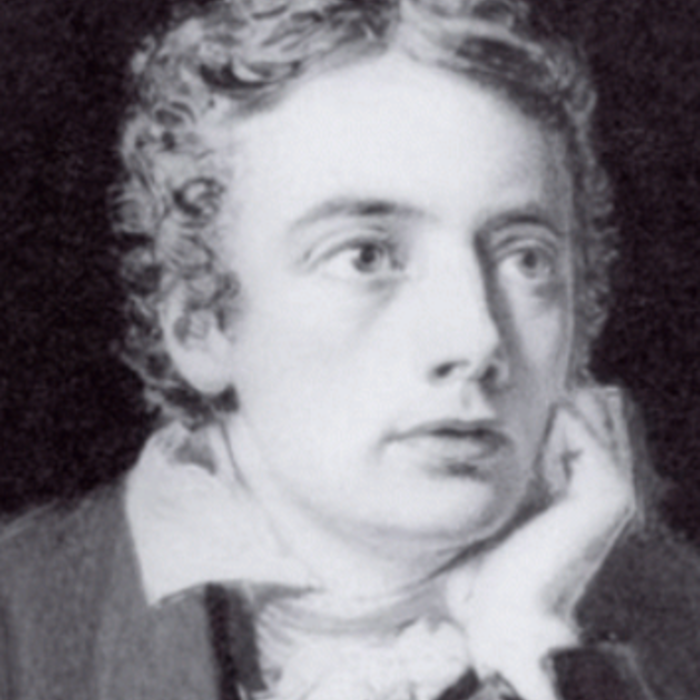
William Wordsworth
William Wordsworth, who rallied for "common speech" within poems and argued against the poetic biases of the period, wrote some of the most influential poetry in Western literature, including his most famous work, The Prelude , which is often considered to be the crowning achievement of English romanticism.
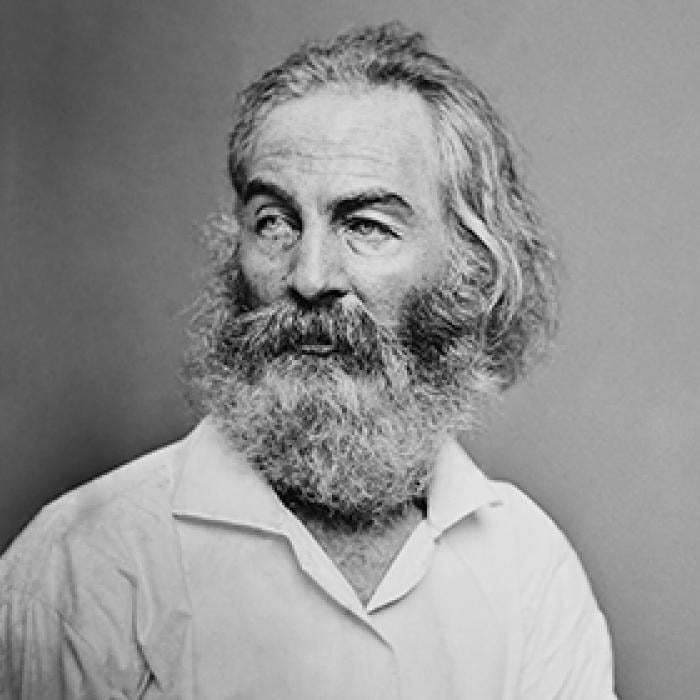
Walt Whitman
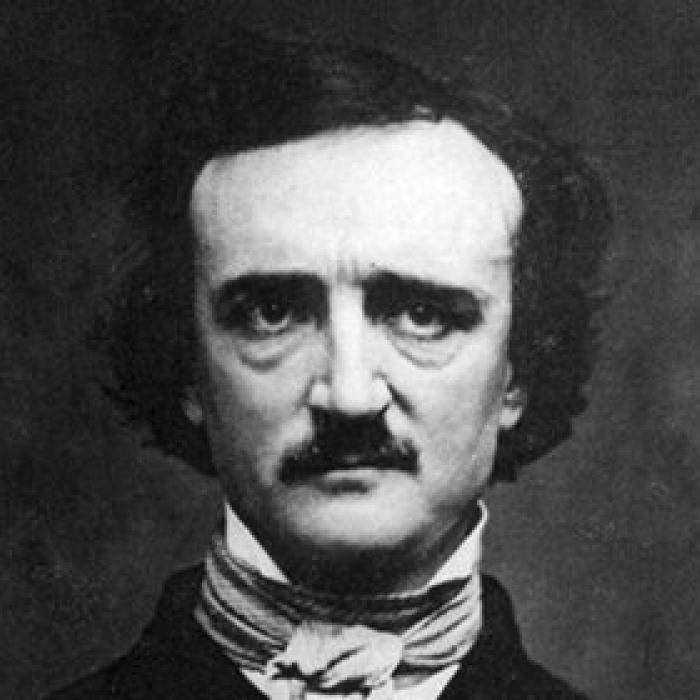

Edgar Allan Poe
Born in 1809, Edgar Allan Poe had a profound impact on American and international literature as an editor, poet, and critic.
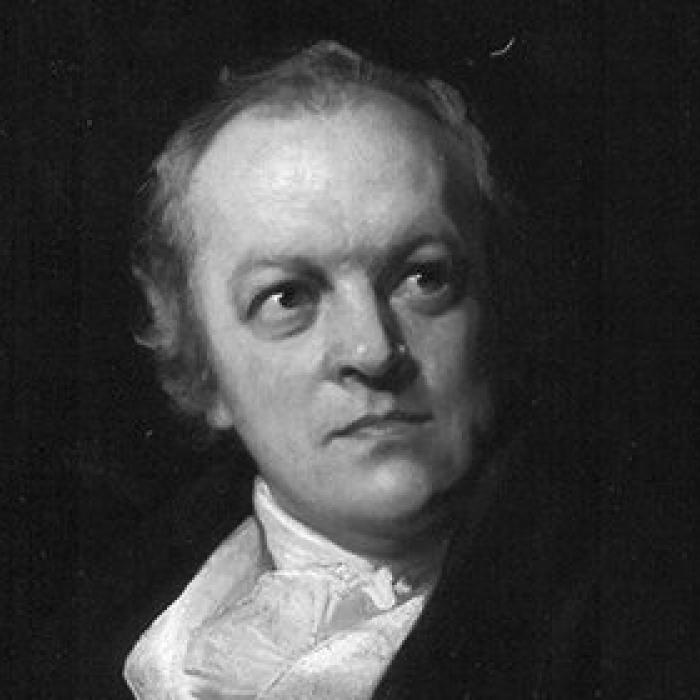
William Blake
William Blake was born in London on November 28, 1757, to James, a hosier, and Catherine Blake. Two of his six siblings died in infancy. From early childhood, Blake spoke of having visions—at four he saw God "put his head to the window"; around age nine, while walking through the countryside, he saw a tree filled with angels.
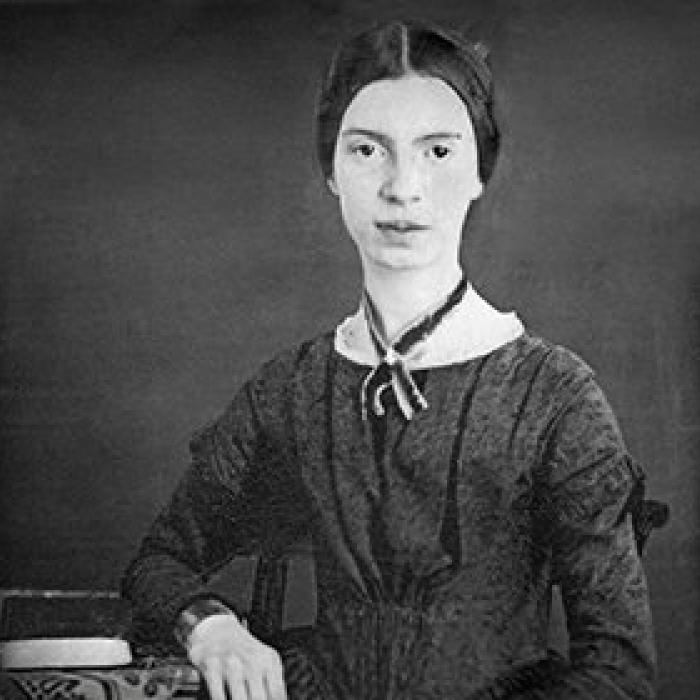
Emily Dickinson
Emily Dickinson was born on December 10, 1830, in Amherst, Massachusetts. While she was extremely prolific as a poet and regularly enclosed poems in letters to friends, she was not publicly recognized during her lifetime. She died in Amherst in 1886, and the first volume of her work was published posthumously in 1890.
Newsletter Sign Up
- Academy of American Poets Newsletter
- Academy of American Poets Educator Newsletter
- Teach This Poem
Profile of William Butler Yeats
George C. Beresford / Hulton Archive / Getty Images
- Favorite Poems & Poets
- Poetic Forms
- Best Sellers
- Classic Literature
- Plays & Drama
- Shakespeare
- Short Stories
- Children's Books
- B.A., English and American Literature, University of California at Santa Barbara
- B.A., English, Columbia College
William Butler Yeats was both poet and playwright, a towering figure in 20th-century literature in English, winner of the Nobel Prize for Literature in 1923, a master of traditional verse forms and at the same time an idol of the modernist poets who followed him.
William Butler Yeats was born into a wealthy, artistic Anglo-Irish family in Dublin in 1865. His father, John Butler Yeats, was educated as an attorney but abandoned the law to become a well-known portrait painter. It was his father’s career as an artist that took the family to London for four years during Yeats’ boyhood. His mother, Susan Mary Pollexfen, was from Sligo, where Yeats spent summers in childhood and later made his home. It was she who introduced William to the Irish folktales which permeated his early poetry. When the family returned to Ireland, Yeats attended high school and later art school in Dublin.
A Young Poet
Yeats was always interested in mystical theories and images, the supernatural, the esoteric and the occult. As a young man, he studied the works of William Blake and Emanuel Swedenborg and was a member of the Theosophical Society and Golden Dawn . But his early poetry was modeled on Shelley and Spenser (e.g., his first published poem, “The Isle of Statues,” in The Dublin University Review ) and drew on Irish folklore and mythology (as in his first full-length collection, The Wanderings of Oisin and Other Poems , 1889). After his family returned to London in 1887, Yeats founded the Rhymer’s Club with Ernest Rhys.
In 1889 Yeats met Irish nationalist and actress Maud Gonne, the great love of his life. She was committed to the political struggle for Irish independence; he was devoted to the revival of Irish heritage and cultural identity, but through her influence, he did become involved in politics and joined the Irish Republican Brotherhood. He proposed to Maud several times, but she never consented and ended up marrying Major John MacBride, a Republican activist who was executed for his role in the 1916 Easter Rising. Yeats wrote many poems and several plays for Gonne, she earned great acclaim in his Cathleen ni Houlihan .
The Irish Literary Revival and the Abbey Theatre
With Lady Gregory and others, Yeats was a founder of the Irish Literary Theatre, which sought to revive Celtic dramatic literature. This project lasted only a couple of years, but Yeats was soon joined by J.M. Synge in the Irish National Theatre, which moved into its permanent home at the Abbey Theatre in 1904. Yeats served as its director for some time and to this day, it plays an active role in launching the careers of new Irish writers and playwrights.
In 1913, Yeats became acquainted with Ezra Pound , an American poet 20 years his junior who had come to London to meet him, because he considered Yeats the only contemporary poet worth studying. Pound served as his secretary for several years, causing a ruckus when he sent several of Yeats’ poems to be published in Poetry magazine with his own edited changes and without Yeats’ approval. Pound also introduced Yeats to the Japanese Noh drama, on which he modeled several plays.
Mysticism & Marriage
At 51, determined to marry and have children, Yeats finally gave up on Maud Gonne and proposed to Georgie Hyde-Lees, a woman half his age whom he knew from his esoteric explorations. In spite of the age difference and his long unrequited love for another, it turned out to be a successful marriage and they had two children. For many years, Yeats and his wife collaborated in a process of automatic writing, in which she contacted various spirit guides and with their help, Yeats constructed the philosophical theory of history contained in A Vision , published in 1925.
Immediately after the formation of the Irish Free State in 1922, Yeats was appointed to its first Senate, where he served for two terms. In 1923 Yeats was awarded the Nobel Prize in Literature. It is generally agreed that he is one of a very few Nobel laureates who produced his best work after receiving the Prize. In the last years of his life, Yeats’ poems became more personal and his politics more conservative. He founded the Irish Academy of Letters in 1932 and continued to write quite prolifically. Yeats died in France in 1939; after World War II his body was moved to Drumcliffe, County Sligo.
- Classic Poems Set to Music
- A List of Every Nobel Prize Winner in Literature
- A Guide to Yeats' 'The Second Coming'
- Yeats and 'The Symbolism of Poetry'
- Singing the Old Songs: Traditional and Literary Ballads
- Yeats Poetry
- Biography of Hilda Doolittle, Poet, Translator, and Memoirist
- Biography of Ernest Hemingway, Pulitzer and Nobel Prize Winning Writer
- 42 Must-Read Feminist Female Authors
- Fast Facts About George Bernard Shaw's Life and Plays
- A Classic Collection of Bird Poems
- Biography of Robert Frost
- 18 Classic Poems of the Christmas Season
- Classic British and American Essays and Speeches
- A Brief Overview of British Literary Periods
- Anadiplosis: Definition and Examples
William Butler Yeats (1865–1939)
Biography: william butler yeats.

In search of commissions, Yeats’s father moved the family to London, which set a pattern for the rest of Yeats’s life as he would move regularly between Dublin to London, summering in Sligo when he was a child, and at his friend Lady Gregory’s estate Coole Park when he was an adult, rarely settling in one place for long, even after he married and raised a family.
Yeats attended high schools in both London and Dublin. College was two years—1883 to 1885—at Dublin’s Metropolitan School of Art (now the prestigious National College of Art and Design), an obvious choice for a young man from one of Ireland’s famously artistic families: his brother Jack would become a renowned painter; one of his sisters was an art teacher; and the other an accomplished designer, a protégé of the great William Morris, in whose studio she worked.
But Yeats soon recognized that poetry was his true calling. He established himself as a man of letters, and, for the next 50-plus years of his life, he worked tirelessly as a poet, playwright, and literary critic. Three themes dominate his work: his determination to use his gift in the interest of revitalizing Irish culture, his personal search for a spiritual identity, and his unrequited love for Maud Gonne.
Maud was the daughter of a British army officer but, raised in Ireland, she adopted the cause of Irish independence and became a leading spokesperson for the movement. From the day they met in 1889, she and Yeats were lifelong friends. She attended meetings of the mystical occult societies Yeats was always drawn to, and he attended her political rallies. A trained and gifted actress, she took the lead in his 1902 play Kathleen ni Houlihan . She broke his heart at least twice, first when she confessed to him that her two children (a son, Georges, who died as an infant, and a daughter, Iseult) were not, as she had claimed, adopted, but her natural children with a Paris journalist, married and much older than she. Some years later, she married John McBride, a major in the Irish Republican Army. Even after Yeats married in 1921 and had his own family, he references in his poetry his unrequited love for Maud. Among the poems we anthologize here, Maud appears in “No Second Troy,” “Easter 1916,” and “A Prayer for My Daughter.”
“The Second Coming,” “Leda and the Swan,” “Among School Children,” “Sailing to Byzantium,” and “Byzantium” touch on Yeats’s interest in discovering and promoting a system of spiritual enlightenment, which would explain the cycles of history, death and reincarnation, and the relationship of the mind and body to the spirit. For much of his life, Yeats was drawn to and took an active role in mystical and occult societies, such as the Order of the Golden Dawn. His wife, George, claimed the gift of automatic writing, the ability to write down information the spirit world dictated to her, and Yeats would claim that much of his philosophical work, A Vision , published in 1926, was based upon information he acquired from the spirit world, which spoke to him through George.
Yeats also used his work to promote the cause of Irish independence, his contribution being a determined effort to forge a distinctly Irish culture, especially a literature. His work as a playwright, though less successful than his poetry, occupied much of his energy throughout his life. He not only wrote but helped to produce the plays of others: J. M. Synge and, later, Sean O’Casey were the best of the playwrights whose work Yeats promoted. With the tireless help from his friend Lady Augusta Gregory, he founded the Irish Literary Theatre, which became the Abbey Theatre in 1904 and which thrives to this day.
As the years went by, Yeats’s fame and status as Ireland’s leading man of letters grew. He won the Nobel Prize for literature in 1923, and he became a senator in the Irish Free State after Ireland won conditional independence from Great Britain. He continued to produce astonishing poetry. His last poems, represented here by “The Circus Animal’s Desertion,” reveal a diminished interest in the search for a utopian vision of spiritual enlightenment that Byzantium represented for him. Instead, he writes of his need to re-immerse himself in the real world of his politically unstable nation and in the pains that love sometimes entails, “the foul rag and bone shop of the heart.”
Typically energetic to the end, Yeats was still writing new poems at the time of his death, in France, on January 28, 1939.
- British Literature: Victorians and Moderns. Authored by : James Sexton. Located at : https://opentextbc.ca/englishliterature . Project : BCcampus Open Textbook Project. License : CC BY: Attribution
- Image of William Butler Yeats. Authored by : George Charles Beresford. Located at : https://commons.wikimedia.org/wiki/File:William_Butler_Yeats_by_George_Charles_Beresford.jpg . License : Public Domain: No Known Copyright
- William Butler Yeats
William Butler Yeats’s Life
An Irish romantic poet and leading figure of twentieth century literature, William Butler Yeats was born in Sandymount, County Dublin, on June 13, 1865. His father, John Butler Yeats, was a linen merchant, a soldier, and a popular painter. His mother, Susan Mary Pollexfen, belonged to a rich merchant family of Sligo. Shortly after William Yeats’s birth, his family moved to the Pollexfen home in County Sligo, and stayed with his maternal family. Gradually, the surrounding environment there became the young poet’s spiritual home. William came from a highly creative and artistic family; his brother Jack was a well-known painter, and his sisters Mary and Elizabeth played their role in the Arts and Crafts Movement. His family relocated to England to provide financial assistance to their father, John, to further his artistic career.
Initially, Yeats’s parents taught their children at home. At the age of twelve, William attended the Godolphin school for four years. Academically, he was not a brilliant student. Although he faced difficulties in languages and mathematics, he was good in Latin. William and his family stayed in England until 1880, but then moved back to Dublin due to some financial problems. William resumed his studies at Erasmus Smith High School, located near his father’s studio. This is where he would spend his leisure time, and he got acquainted with the well-known writers and artists of the city. It was at this time that William became eagerly interested in poetry and began writing. Subsequently, the Dublin University Review acknowledged his talent and published a collection of his first poems in 1885.
William continued his studies at the Metropolitan School of Art in Thomas Street from 1884 to 1886. He was only seventeen when he wrote his first popular works under the influence of Percy Bysshe Shelley , Edmund Spencer, and William Blake. His family spent some time in Dublin, and again moved to London in 1887. In London, William co-founded a club with Ernest Rhys based on London poets. They called it the Rhymers’ Club, and would regularly meet to recite their poems. After joining the company of literary figures, William felt encouraged and published his first notable poem , “The Isle of Statues.” From this point on, he began writing on a regular basis.
In 1889, Yeats met a zealous Irish Nationalist and English heiress named Maud Gonne. Gradually, William developed an intense infatuation with her outspoken manner and beauty . She later played a great role in his poetry. William proposed to her three times, but each time she refused; she married an Irish Nationalist instead. Heartbroken, William indulged in many love affairs but for a long time nothing lasted. Eventually, at the age of fifty-one, he married a twenty-five-year-old girl, Georgie Hyde Lees. In spite of the age difference, their marriage worked, and they had two children. Unfortunately, William’s health started deteriorating in 1925, and he died in a hotel in France on January 28, 1939.
William Butler Yeats’s Works
The first popular poem of William Yeats was “The Isle of Statues.” He composed his first solo work “ Mosada: A Dramatic Poem” in 1886, after which he published “The Wanderings of Oisin and Other poems” in 1889. He also wrote poems with mystical and esoteric themes as well as with the subject of love and published them under the title of “Poems” in 1895. His other collections of poetry include “The Secret Rose,” “In the Seven Woods,” “The Tower,” and “The Winding Stair and Other Poems.” Yeats also wrote plays, including the popular plays “The Countess Cathleen” and “The Land of Heart’s Desire.”
William Butler Yeats’s Style and Popular Poems
William Butler Yeats was a prominent symbolist poet of the twentieth century; he made extensive use of symbolic structures and imagery throughout his poetry. He often exploited free- verse form for his purposes. His early poetry was based on Irish myths , but his later work drew heavily upon contemporary issues including the Irish Civil War. The popular poems of Yeats include “ The Second Coming ,” “A Coat,” “A Last Confession,” “ A Dream of Death,” “Father and Child,” “Lullaby,” “Consolation,” “ A Prayer for My Daughter ,” “Oil and Blood,” “The Dolls,” “Byzantium,” and “The Statues.”
More about Him
William Butler Yeats received the Nobel Prize in Literature in 1923. He also worked in British and Irish literary establishments and served as a senator in the Irish Parliament twice. W. B. Yeats is considered to be a major voice in Irish Literature, having brought Irish myths to the limelight.
Related posts:
- William Shakespeare
- William Golding
- William Goldman
- William Faulkner
- William Carlos Williams
- Robert William Service
- 10 Best William Blake Poems
- To the Right Honorable William, Earl of Dartmouth
- Literary Writing Style of William Faulkner
- Edgar Allan Poe
- Ella Wheeler Wilcox
- John Milton
- A Prayer for My Daughter
- Percy Bysshe Shelley
- John Masefield
- Randall Mann
- Rupert Brooke
- Emily Bronte
- Christopher Marlowe
- Alfred Lord Tennyson
- Anne Bradstreet
- Benjamin Franklin
- Henry van Dyke
- Ellen Bryant Voigt
- Stephen Foster
- Thomas Hood
- Raymond A. Foss
- Robert Burns
- Amber Flora Thomas
- Alicia Elsbeth Stallings
- Dorothy Parker
- Claude McKay
- Eugene Field
- Langston Hughes
- Robert W. Service
- The Second Coming
- When You Are Old
- Sailing to Byzantium
- The Song of Wandering Aengus
- The Wild Swans at Coole
- Leda and the Swan
Post navigation
William Butler Yeats
Short stories.

The poet William Bulter Yeats (1865 - 1939) was a lion of English and Irish literature in the 20th century, awarded the Noble Prize in Literature in 1923. His recognition so soon after Ireland's independence afforded him the opportunity to promote Irish nationalism and cultural independence. In addition to his accomplishments as a poet and short story author, Yeats founded the Abbey Theatre, spearheaded the Irish Literary Revival, and served in the Irish Senate for two terms late in his life.
Yeats grew up in Sandymount in County Dublin, Ireland where he attended school, before studying in London. He enjoyed poetry at an early age, reading Irish myths and works of the occult. The Island of Statues was his first significant poem. Yeats published his first book of lyrical work titled, The Wanderings of Oisin and Other Poems in 1889, comprising magical and fantasy pieces based on the Fenian Cycle of Irish mythology. His early works were clearly influenced by Percy Bysshe Shelley , Edmund Spenser , and William Blake . Yeats moved from Transcendentalism and a fascination with Irish mythology in his early years; he transitioned to poetry, which afforded more realistic and grounded expressions in the physical. His style is considered symbolist.
After World War I, Yeats became disillusioned by the efficacy of democracy, lost much of his revolutionary spirit, and began favoring totalitarianism. He served as a Senator of the Irish Free State from 1922-1928. After winning the Nobel Prize, his book sales increased and he had enough wealth to pay off his family's debts.
"Education is not the filling of a pail, but rather the lighting of a fire."
After many years of poor health, he underwent an operation, regaining his zeal for writing poetry, and dating younger women. In 1936, Yeats edited the Oxford Book of Modern Verse, 1892–1935 . He passed away in 1939. His grave's epitaph is an excerpt from his poem, Under Ben Bulben : Cast a cold Eye On Life, on Death. Horseman, pass by!

Our Greatest Poet-Statesman: Authorized Biography of William Butler Yeats
Growth of a genius.
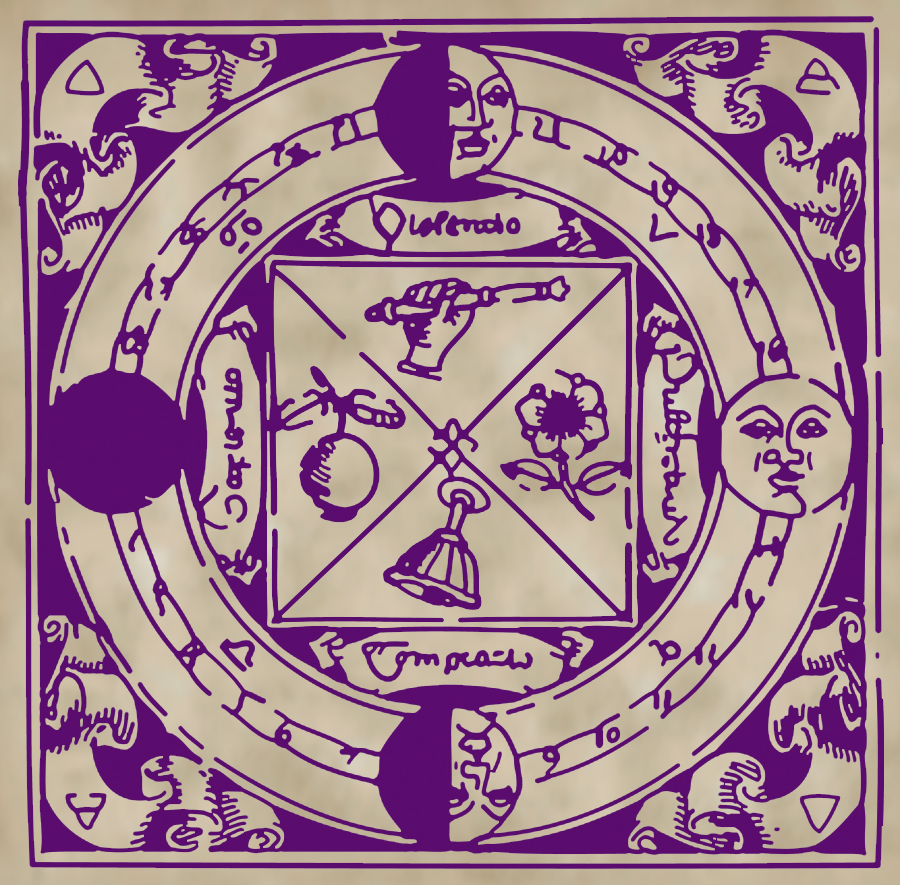
William Butler Yeats (1865-1939)
Poet, Dramatist, Man of the Theatre
W.B. Yeats, generally acknowledged to be the greatest poet of the modern era, lived an extraordinarily rich and productive life as the founder and guiding spirit of the Irish Literary Revival and the Abbey Theatre, the National Theatre of Ireland. His writing helped to inspire Ireland’s struggle for independence and his ideas on intellectual freedom within a democratic society and the role of culture in shaping a distinctive national identity had an influence that continues to the present day. Yeats served as a member of the Irish Senate formed in 1922 when Ireland won her freedom after 700 years of foreign rule. Yeats was also a folklorist, mythologist and life-long student of Eastern and Western religion as well as the occult mysteries. All of these interests and activities found an outlet in Yeats’s achievement as a poet, dramatist and man of the theater.
Rooted in the existential realities of Ireland and the modern age, Yeats’s visionary art represents a public forum of wisdom literature. For Yeats, the arts were a means of recovering and celebrating the mystical idea of the anima mundi – that is, an awareness that soul-making and the business of everyday life are profoundly implicated in one another. The poetry and plays of Yeats were also intended to enable the Irish people to discover their own sense of selfhood in relationship to community. In 1923 Yeats became the first Irishman to win the Nobel Prize in Literature for what the Nobel Committee described as “inspired poetry, which in a highly artistic form gives expression to the spirit of a whole nation.”
In Yeats’s work was the beginning of a discovery of confidence in our own ground, our own place, in our own speech English or Irish. Seamus Heaney
W.B. Yeats is one of those few whose history is the history of their own time, who are part of the consciousness of an age which cannot be understood without them. T.S. Eliot
The early poetry of Yeats is remarkable for a lyrical intensity that approaches incantation in the power of its emotional and spiritual resonance. That tradition had its roots in the methods employed by the bards of ancient Ireland to recite their poetry to the accompaniment of a harp, the national symbol of Ireland. Throughout his career, the long pulsating breath-lines of Yeats, with their syncopated moment to moment rhythmic changes and a delicate modulation of internal rhymes and half-rhymes – all borrowed from Gaelic verse forms – were characteristic of Yeats’s unique poetic voice. Therein lies the key to his incomparable ability to carry his listeners and readers to the outer reaches of the imagination, a realm of pure transcendence where anything is possible.
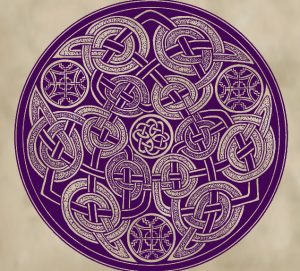
Man of the Theater
A wise theater might make a training in strong and beautiful life the fashion.
“Discoveries” (1906)
Theater artists and critics have increasingly come to realize that Yeats’s accomplishment as a dramatist equals his enormous achievement as a poet. Fintan O’Toole, the highly respected drama critic of The Irish Times , argues that Yeats is the only modern playwright equivalent to Shakespeare in the universality and timelessness of his archetypal imagery. Other critics such as Denis Donoghue believe that Yeats’s “ poésie du theatre ” provides an example to animate Irish and world theater on into the future.
Yeats once described the theater he envisaged as “a memory and a prophecy.” Following this, the W.B. Yeats Foundation has made a special commitment to realizing Yeats’s vision of a “total theatre” combining poetry, music, dance and the visual arts in a highly expressive and holistic engagement with the mind, emotions, senses and imagination of the audience.
Yeats wrote in perhaps the widest range of forms of any dramatist in history, yet each of his brilliantly conceived one-act plays is a perfect realization of its meaning. Because of this, theater artists who can meet the challenges of Yeats are capable of successfully performing virtually any major dramatist from the ancient Greeks and Shakespeare to such masters of the modern stage as Brecht, Beckett and Stephen Sondheim. The work of Yeats, in its mythopoeic, ritualistic and spiritual dimension, is also directly connected with the traditional performing arts of Japan, India, South America and Africa as well as some of the leading avant garde thinkers and theater artists of our own time. Potentially, the visionary art of Yeats is capable of reinvigorating contemporary theater while inspiring a radically transformative “total theatre” of the future.
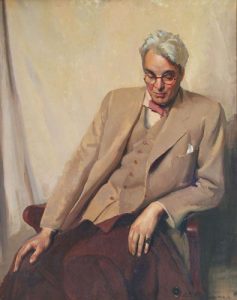
I desire a mysterious art, always reminding and half-reminding those who love it of dearly loved things, doing its work by suggestion, not by direct statement, a complexity of rhythm, colour, gesture, not space-pervading like the intellect but a memory and a prophecy.
“A People’s Theatre” (1918)
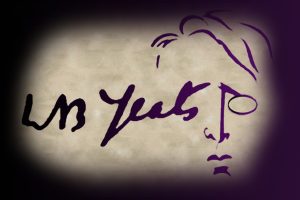
The W.B. Yeats Foundation
The Yeats Foundation was established by Yeats scholar, producer and theater director James Flannery in 1989, the fiftieth anniversary of the poet’s death, in order to honor his enormous achievement as a man and artist and thereby gain a greater understanding and appreciation of the richness and diversity of Irish culture. The Foundation was launched in June 1989 with a reading from Yeats’s work titled “The Poet and Politics,” which was held at New York’s Lincoln Center for the Performing Arts . Readers included Senators Daniel Patrick Moynihan and Eugene McCarthy, Governor Hugh Carey and award-winning actresses Tammy Grimes and Viveca Lindfors . The guests of honor were Irish Senator Michael Yeats , the son of the poet and the Honorary Patron of the Foundation , as well as his wife, the noted singer Gráinne Yeats .

Yeats International Theatre Festival
From 1989-1993, thanks to the support of Donald R. Keough , the President of the Coca-Cola Company, the Yeats Foundation sponsored a Yeats International Theatre Festival at the world-famous Abbey Theatre , the National Theatre of Ireland. Under the direction of James Flannery , the Festival featured productions of fifteen of the poet’s one act plays grouped under the following titles:
-The Cuchulain Cycle: An Heroic Journey in Five Episodes -Masks of Transformation: Art and Revolution in the Modern World -Sacred Mysteries: A Celtic Way of Love and Sexuality -Yeats and Ireland’s National Identity -Art and Spirituality as a Way to Peace
The Music Director of the Yeats Festival was Bill Whelan , The Grammy Award-winning composer of Riverdance , who has often credited his work on Yeats’s plays with inspiring that phenomenally successful piece of total theater. Besides members of the Abbey Company and other distinguished Irish artists, performers in the Yeats productions included stage and film stars Ciarán Hinds in the role of the Celtic hero Cuchulain , Olwen Fouéré as Cathleen ni Houlihan and Fionnula Flanagan in the title role of The Countess Cathleen . Guest directors included master puppeteer Roman Paska and Stan Wojewodski , Director of the Yale Repertory Theatre and Dean of the Yale School of Drama . The Yeats Festival also included lectures by such major public figures, artists and scholars as President Mary Robinson of Ireland , eminent choral conductor Robert Shaw, feminist leader Betty Friedan , Northern Irish political activist Bernadette Devlin McAlliskey , novelist Ben Kiely , poets Eavan Boland, Robert Bly, Theo Dorgan, Brendan Kennelly, John Montague and Nualla ni Dhomhnaill , historians Margaret Curtin and Conor Cruise O’Brien , philosopher Mark Hederman , theologian Terence McCaughey , critics Eric Bentley , Terence Brown , Denis Donoghue, Declan Kiberd and William McCormac k as well as painters Robert Ballagh and Anne Yeats , the daughter of the poet.
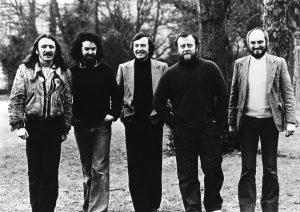
Concerts presented by the Yeats Festival featured such renowned performers as singer-songwriter Paul Brady, Elvis Costello, Christy Moore and Hothouse Flowers . Also a program at Kilmainham Gaol titled “The Walls Speak” featuring the Israeli cellist Maya Beiser , choral group Anuna , singer Andy Irvine and actress Olwen Fouéré reciting poems and other works inspired by the leaders of the 1916 Easter Rising who were executed in the stone yard of the prison.
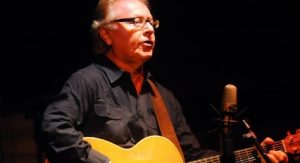
The Festival placed a special emphasis on promoting peace and reconciliation through the arts with exhibitions on the impact of violence in Northern Ireland, “ Dúchas ”, or the spiritual meaning of identity in Ireland, and contemporary children’s art in Ireland North and South. As a contribution to the peace process in Northern Ireland, the Festival also organized a choral workshop for singers from throughout Ireland North and South under the direction of Robert Shaw as well as an ecumenical service at Christ Church Cathedral. Symposiums organized as part of the Yeats Festival included: “The Role of the Muse in Ireland: Art as A Catalyst for Peace in Northern Ireland” and “Are Ireland’s Heroes Her National Enemies : A Response to Yeats’s ‘Cuchulain Cycle , ’ ” which was broadcast live on Telefis Eireann , Ireland’s National Television Network.
Ciaran Hinds as Cuchulain
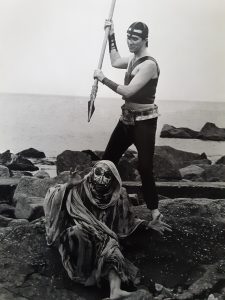
The Yeats International Theatre Festival was launched in 1989 with a production of Yeats’s magnus opus , the five-play “Cuchulain Cycle.” This was the first production of the full Cycle at the Abbey Theatre . Written by Yeats over a period of thirty-five years and inspired by a range of different dramatic forms from the Greeks, Shakespeare and the Japanese Noh to commedia dell’arte and German expressionism, the Cycle is a microcosm of the extraordinary achievement of Yeats the dramatist as well as a meditation on the development of Ireland during the turbulent decades of its emergence as an Independent nation.
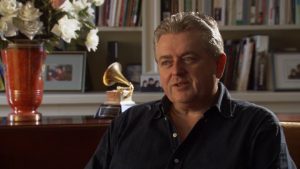
Click below in order to listen to excerpts from the brilliant score by Bill Whelan for At the Hawk’s Well , the first play of the Cycle.
Eye of the Mind
Human Faces
Emer’s Song
Under the title, “Masks of Transformation,” the 1990 Yeats Festival featured the brilliant Irish actress Olwen Fouéré in the title role of Yeats’s revolutionary play, Cathleen ni Houlihan . The production also included two other plays dealing with the cult of violence that continued to wreak a terrible toll on Irish life throughout the century, especially in Northern Ireland.
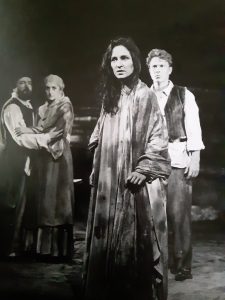
“Sacred Mysteries,” the title of the 1991 Yeats Festival, explored the theme of heroism from a feminine perspective in three powerful plays: Deirdre , A Full Moon in March and The Shadowy Waters . In each of the plays it is the heroine who makes a decisive choice that challenges the patriarchal order of masculine privilege and brings about a new order of self-realization and fulfillment for both sexes.
The accompanying documentary includes interviews with iconic feminist leader betty friedan ,, poet and cultural activist robert bly, and noted irish literary and theatrical figures niualla ni dhomnaill , noel pearson , garry hynes and joan o’hara . the film also features the mesmerizing dance by sarah jane scaife to music by bill whelan that brought the production of full moon in march to a climax..
The Yeats Festival is of immeasurable importance to the Abbey Theatre and the cultural life of Ireland. The Festival has enabled a whole generation of Irish artists and audiences to become aware of Yeats’s enormous contribution to our heritage. It has enabled the Abbey to realize one of Yeats’s original goals, namely to become a theatre not just of entertainment but of intellectual excitement. Finally it has given long overdue recognition to Yeats’s accomplishment as a dramatist equivalent to his reputation as the greatest poet of the twentieth century.
Noel Pearson, Chairman, Board of Directors, Abbey Theatre
Atlanta Presentations
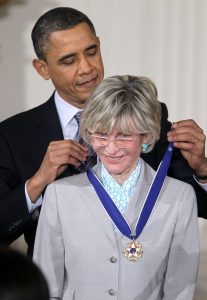
Audiences in Atlanta have also enjoyed a wide range of public events presented by the Yeats Foundation over the past thirty years, many of them at Emory University . These have included lectures by such noted figures as American Ambassador to Ireland Jean Kennedy Smith , Prime Minister of Ireland Albert Reynolds , Sein Fein leader Gerry Adams , Oscar and Tony Award-winning producer Noel Pearson , literary critics Seamus Deane , Luke Gibbons, Declan Kiberd and Robert Welch as well as historians Tim Pat Coogan and Kerby Miller .
Musical events presented by the Yeats Foundation include concerts by the National Concert Orchestra of Ireland , “Atlantic Bridges: A Celebration of Northern Irish and Appalachian Artists,” singer Tommy Sands (known as the Bob Dylan of Northern Ireland), musician-scholar Mick Moloney , the Ulster-Scots Folk Orchestra , harper Janet Harbison (director of the Belfast Harp Festival), “A Tribute to John McCormack” with tenor James Flannery and “Let Ye All Be Irish Tonight: A St. Patrick’s Day Concert of Irish-American Music, Song and Dance.”
Exhibitions sponsored in Atlanta by the Yeats Foundation include “Homeland: Turn of the Century Ulster in Photographs,” “ An Gorta Mór : The Great Irish Famine” and, in cooperation with the Margaret Mitchell House, “Fire on the Hearth: Portraits of Irish American Women.”
In addition to the above, the Yeats Foundation has produced a number of symposiums featuring internationally noted scholars, artists and public figures:
-“Ulster Roots/Southern Branches: The Scots-Irish Heritage of Northern Ireland and the American South” -“The Quiet Man and After: Reinventing Ireland Through Film” -“The Great Tapestry: The Source and Meaning of Celtic Spirituality” -“ An Gorta Mór : The Great Irish Famine” -“Making Connections: The Celtic Roots of Southern Music”
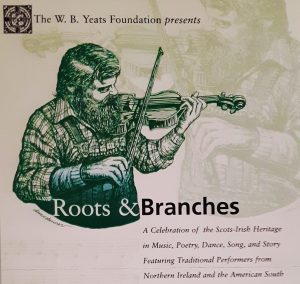
Noted Irish films given their American premieres by the Yeats Foundation include the Oscar-winning My Left Foot as well as Some Mother’s Son and Dancing with Lughnasa .
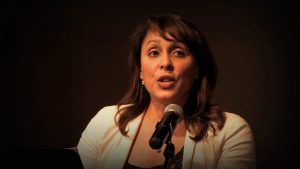
In collaboration with the Irish Consulate of Atlanta, the Yeats Foundation also produced “Still Here/Here Still,” a program in June 2015 commemorating the 150 th anniversary of the birth of Yeats at the Carlos Museum, Emory University . Participants included Pulitzer Prize-winning poet and U.S. Poet Laureate Natasha Trethewey and Georgia Poet Laureate David Bottoms as well as Yeats scholars Geraldine Higgins and Ronald Schuchard. The program also featured a staged reading of Yeats’s The Cat and the Moon under the direction of James Flannery with music by Joseph Sobo l and actors from the Atlanta theater company Aris.
Click here to watch Natasha Tretheway’s deeply personal interpretation of Yeat’s Iconic poem, “Easter 1916” as well as Ronald Schuchard’s brilliant analysis and reading of “The Second Coming” and “A Stare’s Nest by My Window.”
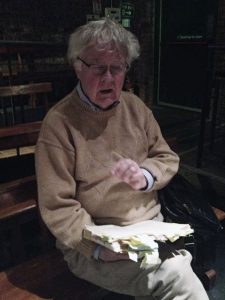
In recognition of its efforts demonstrating the contributions of Ireland to the distinctive culture of the American South, James Flannery and the Yeats Foundation received the 2002 Georgia Governor’s Award in the Humanities.
Southern Celtic Christmas Concert
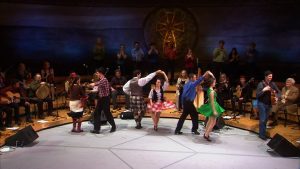
For eighteen years, a signature event of the Yeats Foundation was an annual Christmas program that became recognized as one of the highlights of the Atlanta holiday season. In 2010 A Southern Celtic Christmas Concert program was filmed for broadcast on Georgia Public Broadcasting and went on to win a 2013 Emmy Award for “Outstanding Achievement in Arts and Entertainment.” In poetry, music, song, dance and story, the program celebrates the Christmas traditions of Ireland and the other Celtic lands and their connections with similar traditions in the American South. Over the past six years the program has been distributed nationally on PBS , reaching every major market in the country.
To learn more about the award-winning Southern Celtic Christmas Concert featuring the talents of three Grammy Award-winning artists as well as a rare television appearance by the beloved Nobel Prize-winning Irish poet Seamus Heaney, click on the Celtic Christmas page at the top of our site.


W. B. Yeats
William Butler Yeats (13 June 1865 – 28 January 1939) was an Irish poet and one of the foremost figures of 20th-century literature. A pillar of the Irish literary establishment, he helped to found the Abbey Theatre, and in his later years served two terms as a Senator of the Irish Free State. He was a driving force behind the Irish Literary Revival along with Lady Gregory, Edward Martyn and others.
Yeats was born in Sandymount, Ireland and educated there and in London. He spent childhood holidays in County Sligo and studied poetry from an early age when he became fascinated by Irish legends and the occult. These topics feature in the first phase of his work, which lasted roughly until the turn of the 20th century. His earliest volume of verse was published in 1889, and its slow-paced and lyrical poems display debts to Edmund Spenser, Percy Bysshe Shelley, and the poets of the Pre-Raphaelite Brotherhood. From 1900, his poetry grew more physical and realistic. He largely renounced the transcendental beliefs of his youth, though he remained preoccupied with physical and spiritual masks, as well as with cyclical theories of life. In 1923, he was awarded the Nobel Prize in Literature.
#IrishWriters #Nobel
William Butler Yeats
by Anthony Domestico
W.B. Yeats (1865-1939) is the figure most associated with the Irish Literary Revival of the early 20th century; his poetry, prose, and drama helped earn him the 1923 Nobel Prize in Literature. He was a complex amalgam of influences and interests, deeply engaged with the political issues of Home Rule yet equally fascinated by esoteric spiritualism, using some of the most traditional poetic forms available yet using them in ways that revealed their flexibility and capacity to accommodate changing and at times violent conditions.
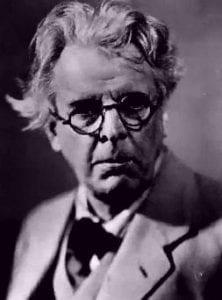
William Butler Yeats was born on June 13, 1865 in the village of Sandymount in County Dublin, Ireland. His father, originally a lawyer, quit his career in the law to become an artist, a career that Yeats’s brother Jack would follow. After attending the Metropolitan School of Art in Dublin from 1884 to 1886, Yeats moved to London with his family. Here he met George Bernard Shaw, Oscar Wilde, and other poets and artists. His first volume of verse, The Wanderings of Oisin and Other Poems , appeared in 1889. In this same year, Yeats met Maud Gonne, a beauty with nationalist sympathies; Yeats’s unrequited love affair with Gonne lasted decades, and she served as the impetus for much of his lyric poetry.
Yeats met Lady Augusta Gregory in 1894, a friendship that proved essential for the Irish Literary Revival. In 1899 , Yeats helped found the Irish Literary Theatre, which become the Abbey Theatre in 1904 and served as the main source for the renaissance of Irish drama in the early years of the 20th century. It helped put Irish drama at the forefront of world theater, staging the premieres of plays like Yeats’s own On Baile’s Strand and Sean O’Casey ’s The Plough and the Stars .
Yeats’s poetic output throughout the years was extremely varied, from the nostalgia-drenched Irish imagery of “The Lake Isle of Innisfree” to the 1892 dram a The Countess Cathleen , from the abstruse symbology of the 1925 A Vision to the political nature of poems like “Easter 1916.” His poetry often dealt with the relation between artifice and truth, between poetic creation and natural beauty. Yeats continued to be interested in Irish national politics even after the country gained independence from England: he was appointed to the Irish Senate in 1922 .
Yeats’s poetry continued to evolve as he aged. His last years saw the publication of many of his strongest works, including “Among School Children” in 1928 and “The Circus Animal’s Desertion” in 1939. After briefly flirting with the Irish Blueshirts, an Irish Fascist political party, Yeats supported the Free State and distanced himself from Fascism in its German and Italian incarnations. Yeats died in Menton, France in 1939, the most celebrated Irish poet of the century and one of modernism’s most complex creators of verse and drama.
WATCH: When William Butler Yeats oversaw Ireland's "beastly" coin design
Not everyone was impressed with the irish coinage designs overseen by william butler yeats in 1926, spurring controversy at home and abroad..
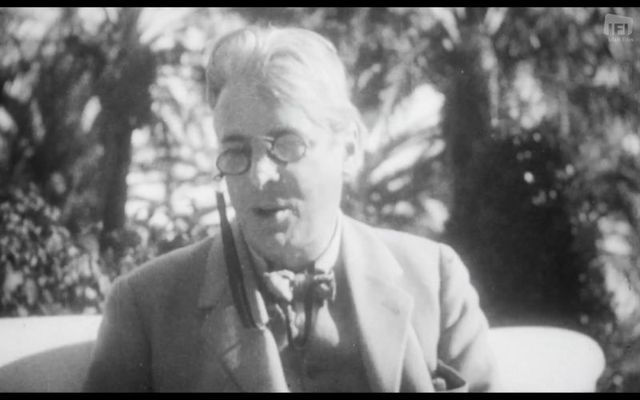
"Mr. Yeats and the Beastly Coins" is now available to stream for free via the Irish Film Institute's IFI Archive Player.
In the wake of the Irish Civil War and the establishment of the new Irish Free State, this film documents the creation of a new coinage for Ireland in 1926.
Poet William Butler Yeats was already an internationally renowned figure when invited to chair the design committee for a set of coins which would proudly befit the new state.
However, not everyone was impressed with the designs which featured a selection of Irish livestock, and much controversy was caused at home and abroad.
Adding to this controversy, the coins, intended to distinguish Ireland as a sovereign nation independent from Britain, were created by an Englishman and produced in London.
The film "Mr. Yeats and the Beastly Coins" utilises animation, a mix of archival and modern footage, and photographs to tell this remarkable story. The inflammatory nature of the tale is animated by a wryly entertaining voiceover and by spirited music by the composer Hugh Rodgers. The ‘beastly’ coins were eventually held with great affection by Irish people and became a distinctive symbol of a newly independent Ireland.
"Mr. Yeats and the Beastly Coins" is a part of the Irish Film Institute's F-Rated: Short Films by Irish Women and After ’16 collections.
The Irish Film Institute's F-Rated: Short Films by Irish Women collection
F-Rated: Short Films by Irish Women presents a varied series of stories told through the prism of the female gaze. The films are drawn from collections preserved in the IFI Irish Film Archive. The F-rating, which tags films written or directed by women, is used by exhibitors such as the IFI to promote films that fairly represent women on screen and behind the camera. This collection brings together 36 films made by Irish women over four decades. Many of the films are written by women; all are directed by women. It includes drama and documentary; live action and animation; films made with generous support and films made on a shoestring; films in Irish and films in English (one in Polish, one in Ukranian); independent films that were seen by few, and films that garnered global attention, Academy Awards and BAFTAs.
The short form has traditionally proved more accessible for women filmmakers, and so, despite their underrepresentation in the catalogue of mainstream feature film, women’s stories have been told over the past 40 years. Many of the stories presented here subvert mainstream male-dominated narratives and present alternative perspectives that are fresh and reflective of the lived experience of women in Irish society.
The Irish Film Institute invites you to explore this powerful collection, which shows the evolution of Irish filmmaking and indeed of Irish society itself, as interpreted by Irish women filmmakers over the past four decades.
Programme notes for F-Rated: Short Films by Irish Women have been prepared with the assistance of UCD interns Rachel Cahill and Rebekah Ryan.
The Irish Film Institute's After '16 collection
Funded by Bord Scannán na hÉireann/the Irish Film Board, After ’16 is a creative response by Irish filmmakers to the events of Easter 1916. This collection of nine short films is a mixture of live-action, animation and documentary, and tells stories from the eve of the Easter Rising, all the way to the Troubles in 1970s Northern Ireland and beyond.
Following a premiere at the Audi Dublin International Film Festival in 2016, the films went on to screen as a collection at Galway and Cork Film Festivals, as well as at Irish film festivals around the world, including Boston and Toronto. The films also found audiences outside the cinema, with screenings at the National Museum of Ireland at Collins Barracks, and in Dublin City Libraries. The Party and A Terrible Hullabaloo were included in the official selection for Encounters Short Film and Animation Festival, Bristol. In 2017, The Party had the distinction of being nominated for a BAFTA in the Short Film category.
It is anticipated that the unique addition of downloadable notes for schools will expand the potential for greater appreciation by young people of our history and storytelling heritage.
"Mr. Yeats and the Beastly Coins" is published here thanks to the Irish Film Institute (IFI), who IrishCentral has partnered up with to bring you a taste of what their remarkable collection entails. You can find all IrishCentral articles and videos from the IFI here .
To watch more historic Irish footage, visit the IFI Archive Player , the Irish Film Institute’s virtual viewing room that provides audiences around the globe free, instant access to Irish heritage preserved in the IFI Irish Film Archive. Irish Culture from the last century is reflected through documentaries, animation, adverts, amateur footage, feature films, and much more. You can also download the IFI Archive Player App for free on iPhone, Android, Apple TV, Amazon Fire TV, and Roku.
IrishCentral has partnered up with the IFI to bring you a taste of what their remarkable collections entail. You can find all IrishCentral articles and videos from the IFI here .
Related: Books , Irish Film Institute
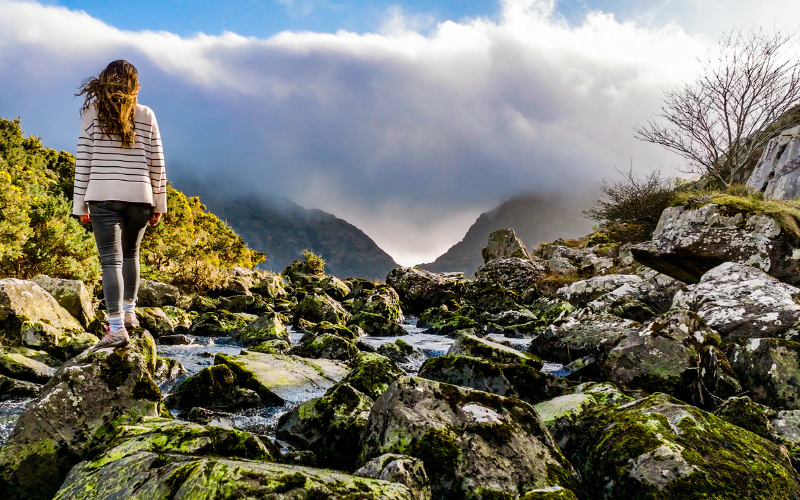
Learn the ancient Irish language with this new, self-paced online course
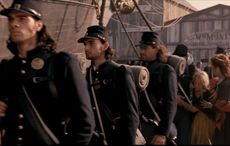
On This Day: The US Civil War begins in 1861
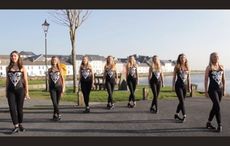
WATCH: Irish dancers smash their Ed Sheeran "Galway Girl" audition

GIVEAWAY: Last chance to WIN a trip to Ireland, what fills your heart?
WWII ship where five brave Sullivan brothers died discovered on St. Patrick's Day
The intersection of Saint Patrick and paganism in Ireland
TUNE IN: St. Patrick’s Day Parade LIVE from Dublin today!
US leprechauns versus Irish fairies - a St. Patrick’s Day death match
NYC Saint Patrick's Day Parade announces line of march ahead of March 16
St Patrick's Festival is here! Your guide to the Dublin City celebrations
Sober St. Patrick’s Day to “reclaim the day” today in NYC
“Walking in the footsteps” of your Irish ancestors

IMAGES
VIDEO
COMMENTS
William Butler Yeats (born June 13, 1865, Sandymount, Dublin, Ireland—died January 28, 1939, Roquebrune-Cap-Martin, France) Irish poet, dramatist, and prose writer, one of the greatest English-language poets of the 20th century. He received the Nobel Prize for Literature in 1923. Yeats's father, John Butler Yeats, was a barrister who ...
William Butler Yeats published his first works in the mid-1880s while a student at Dublin's Metropolitan School of Art. His early accomplishments include The Wanderings of Oisin and Other Poems ...
Biography Early years. William Butler Yeats was born in Sandymount in County Dublin, Ireland. His father, John Butler Yeats, was a descendant of Jervis Yeats, a Williamite soldier, linen merchant, and well-known painter, who died in 1712. Benjamin Yeats, Jervis's grandson and William's great-great-grandfather, had in 1773 married Mary Butler of a landed family in County Kildare.
A Short Biography of William Butler Yeats. William Butler Yeats was born on 13th June 1865 in Dublin, Ireland, to John Yeats and Susan Mary Pollexfen. He was the eldest son of the family. His father was a lawyer, and when Yeats was born, he left his profession. Yeats' early years of life were spent in London and also made frequent visits to ...
William Butler Yeats was an Irish poet and dramatist (playwright). Some think he was the greatest poet of the twentieth century. He won the Nobel Prize for literature in 1923. The works of William Butler Yeats form a bridge between the romantic poetry of the nineteenth century and the hard clear language of modern poetry.
William Butler Yeats is widely considered to be one of the greatest poets of the 20th century. He belonged to the Protestant, Anglo-Irish minority that had controlled the economic, political, social, and cultural life of Ireland since at least the end of the 17th century. Most members of this minority considered themselves English people who happened to have been born in Ireland, but Yeats ...
William Butler Yeats was an Irish poet and playwright who played a leading role in the Irish Literary Renaissance. His works often explore themes of mysticism, Irish mythology, and the supernatural. William Butler Yeats is regarded as one of the most important poets of the 20th century. Remarkably, in 1923, he won the Nobel Prize in Literature ...
Born in Sandymount, Dublin, Ireland, on June 13, 1865, William Butler Yeats was the son of the well-known Irish painter, John Butler Yeats. He spent his childhood in County Sligo, where his parents were raised, and in London. He returned to Dublin at the age of fifteen to continue his education and to study painting, but quickly discovered that ...
By. Bob Holman & Margery Snyder. Updated on January 27, 2020. William Butler Yeats was both poet and playwright, a towering figure in 20th-century literature in English, winner of the Nobel Prize for Literature in 1923, a master of traditional verse forms and at the same time an idol of the modernist poets who followed him.
Biography: William Butler Yeats. William Butler Yeats was born on June 13, 1865, in Dublin, Ireland. His father, John, was a lawyer, but an artist at heart, and he left his law practice to become a portrait painter. His mother was Susan Pollexfen, whose family had prosperous business interests in milling and shipbuilding in Sligo, on Ireland ...
William Butler Yeats (June 13, 1865 - January 28, 1939) was an Irish poet, dramatist, mystic, and public figure.He is considered among the most influential figures in early twentieth-century English verse and regarded by some critics as among the greatest poets in the English language.. Yeats came to maturity at the beginning of the twentieth century and his poetry marks a transition from ...
William Butler Yeats Short Fiction Analysis ... William Butler Yeats Biography. W illiam Butler Yeats was an instrumental part of the "Irish Literary Revival" that redefined Irish writing, and ...
William Butler Yeats 101. The different sides of Ireland's most famous poet. Illustration by Sophie Herxheimer. It is possible that no other 20th-century poet has had as much of a singular and lasting impact on his nation and national literature than William Butler Yeats (1865-1939). Yeats's wide range of styles and subjects reflected the ...
We would like to show you a description here but the site won't allow us.
William Butler Yeats received the Nobel Prize in Literature in 1923. He also worked in British and Irish literary establishments and served as a senator in the Irish Parliament twice. W. B. Yeats is considered to be a major voice in Irish Literature, having brought Irish myths to the limelight. Biography, literary works and style of William ...
The poet William Bulter Yeats (1865 - 1939) was a lion of English and Irish literature in the 20th century, awarded the Noble Prize in Literature in 1923. His recognition so soon after Ireland's independence afforded him the opportunity to promote Irish nationalism and cultural independence. In addition to his accomplishments as a poet and ...
W. B. YEATS, 1865—1939. ByJoseph Hone.The Macmillan Company.$6.00. MR. HONE'S official biography of Yeats has been awaited with great interest by those many readers of poetry who consider ...
William Butler Yeats (1865-1939) Poet, Dramatist, Man of the Theatre W.B. Yeats, generally acknowledged to be the greatest poet of the modern era, lived an extraordinarily rich and productive life as the founder and guiding spirit of the Irish Literary Revival and the Abbey Theatre, the National Theatre of Ireland. His writing helped […]
W. B. Yeats. William Butler Yeats (13 June 1865 - 28 January 1939) was an Irish poet and one of the foremost figures of 20th-century literature. A pillar of the Irish literary establishment, he helped to found the Abbey Theatre, and in his later years served two terms as a Senator of the Irish Free State. He was a driving force behind the ...
Biography. by Anthony Domestico. W.B. Yeats (1865-1939) is the figure most associated with the Irish Literary Revival of the early 20th century; his poetry, prose, and drama helped earn him the 1923 Nobel Prize in Literature. He was a complex amalgam of influences and interests, deeply engaged with the political issues of Home Rule yet equally fascinated by esoteric spiritualism, using some of ...
William Butler Yeats was born on 13 June 1865 in the seaside village of Sandymount in County Dublin, Ireland. His mother, Susan Mary Pollexfen (1841-1900) was the daughter of a wealthy family from County Sligo. Susan's father's political loyalties, that Ireland should remain under the British crown, were in direct opposition to her husband ...
WATCH: When William Butler Yeats oversaw Ireland's "beastly" coin design. Not everyone was impressed with the Irish coinage designs overseen by William Butler Yeats in 1926, spurring controversy ...
Poet William Butler Yeats was already an internationally renowned figure when invited to chair the design committee for a set of coins which would proudly befit the new state. ... The short form has traditionally proved more accessible for women filmmakers, and so, despite their underrepresenta‐ tion in the catalogue of mainstream fea ...